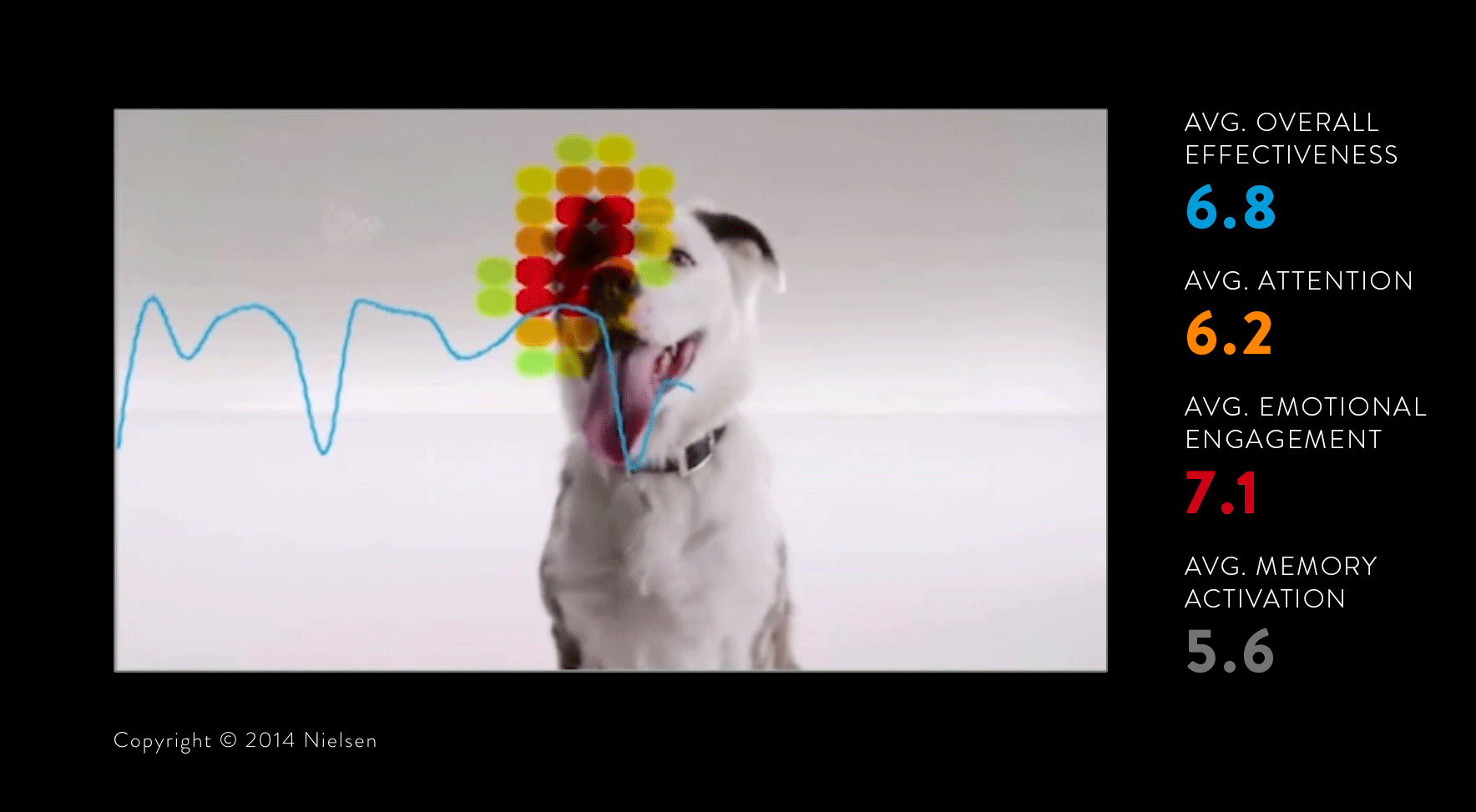By Michael E. Smith, PhD, MBA, Director of Industry Relations, Nielsen Neuro
For non-profits with big ambitions and small budgets, maximizing each ad to be effective and memorable is essential. Nielsen and the Ad Council used consumer neuroscience to do just that for The Shelter Pet Project, a non-profit with the goal of making shelters the first place potential adopters turn to when they’re looking for a pet.
The Shelter Pet Project already had a strong-performing ad. The ad’s star, Jules the dog, earned the PSA a 6.8 out of 10 for overall effectiveness, which ranks in the top 40 percent of Nielsen-tested ads. But there was room to improve. Using consumer neuroscience, Nielsen graphed how people’s brains responded to the ad to help the creative team identify, second-by-second, which scenes did and didn’t resonate.
Using a combination of electroencephalograph (EEG) and eye-tracking measurements to determine the impact the ads had on viewers, the team effectively quantified the power of the pooch. It did so by confirming previous facial processing research claiming that showing that faces on screen—including dogs’—boosts viewers’ emotional engagement. But when Jules was off screen, attention and emotional levels dropped. They also determined that showing Jules, the logo and the website URL at the end of the ad competed for viewers’ attention—causing confusion. So the team needed to eliminate that confusion and refocus the audience on the PSA’s final call to action.

To capitalize on the findings, the team re-edited the PSA to shorten Jules’s off-screen moments and sharpen the ending. When the team tested the re-edited PSA, viewers were found to be more consistently engaged. The updated ad also held viewers’ attention better and could be recalled more clearly than the earlier version.
Win-Win-Win Results
In the first three months after the February PSA launch, traffic to ShelterPetProject.org increased 133 percent, and the average monthly traffic increased from 74,000 to 174,000 visitors—a change that may have real life or death implications for shelter pets. By keeping the powerful presence of Jules and clarifying the main message and call to action, The Shelter Pet Project improved its ad while preserving the storyline.
Key Takeaways
- Humans connect to each other—and dogs—at a base level when they see faces.
- Emotion can distract.
- Finding the right balance between emotion and call-to-action is essential to drive desired results.
